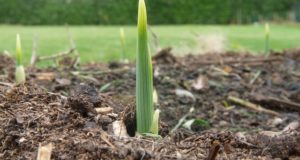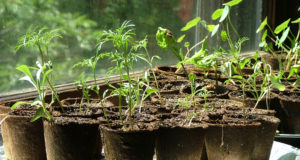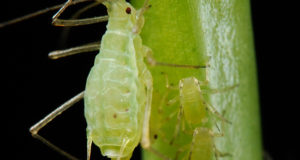 Roses are beautiful additions to any garden, and the hips and petals can be eaten for their vitamin C content and flavor. My grandmother and great-grandmother’s roses have always intrigued me, as they were always very beautiful. Now that I have my own home, I want to propagate some of my grandmother’s roses in my own garden. We will learn how together!
Roses are beautiful additions to any garden, and the hips and petals can be eaten for their vitamin C content and flavor. My grandmother and great-grandmother’s roses have always intrigued me, as they were always very beautiful. Now that I have my own home, I want to propagate some of my grandmother’s roses in my own garden. We will learn how together!
Roses from Rose Hip Seed
Growing roses from seed takes a bit of time and patience. It will take about three years for a rose bush to grow from seed. However, it is an interesting, inexpensive, and fun hobby for gardeners and rose lovers alike. Just keep in mind that the success rate is small, as few seeds will germinate.
Growing from seed:
- Before planting soak seeds in purified water for 24 hours. Some of the seed will sink, and some will float. Floating seeds are not viable, so throw them away.
- Plant seeds in early spring when all danger of frost has past.
- Place seeds ½ inch deep in a 50/50 mixture of sterile potting soil and vermiculite. Use small pots with drainage holes in the bottom – 4-inch or 6-inch diameter pots will be great.
- Never let pots stand in water on the saucer.
- Lightly dust the seed with rooting hormone or a fungicide before covering with soil mixture. This will reduce chances of damp off, a disease that kills young seedlings.
- Spray pots with water until soil is thoroughly saturated.
- Set pots outside in direct sunlight. Check often to see that the soil never dries out.
- Plants should sprout in about six weeks, or when the weather has warmed up. If the weather becomes too hot, seedlings will quit sprouting.
Transplanting:
- When seedlings are 3 to 4 inches tall, transplant them into a larger pot.
- As plants continue growing, they may need to be transplanted again in 8 to 12 months.
- Plants will continue to grow and mature. It will be about three years before they will yield blooms.
Many tales have been told about mothers and grandmothers that traveled across country with Mason jars and rose cuttings to plant in their new gardens. The tales are verifiable, and we know that many ladies moving west carried small pieces of rose bushes they had grown in the east. These baby bushes were sprouted and grown all across the country. Growing roses from cuttings is quite easy and has a good success rate.
Mason Jar Method:
- This process will work in spring, late summer, or early fall. In mild climates, it may also work in winter.
- Gather as many glass or plastic jars as the number of bushes you plan to plant. Two-liter soda bottles with the bottoms removed will also work just as well.
- Select healthy canes from the roses you want to propagate.
- Cut a two-foot section from the chosen cane. It should be cut just above an outward facing bud.
- Carefully remove thorns for ease in handling. Also remove leaves and twigs.
- Cut the cane into pieces 6 to 9 inches in length, with the bottoms of each section being as close to a leaf node as possible. Cuts should be diagonal, not straight across.
- Remove a small area of the cane’s surface – about an inch long – just below the leaf node.
- Dip the cane pieces in rooting hormone. Stick the canes into the ground or into pots and cover with jars.
- Water the soil around the jars as needed so that the canes don’t dry out.
- It will take a couple of months for new bushes to take root and begin sprouting leaves.
Stick-in-the-Mud Method:
Follow directions above for making your cuttings, then stick your cane pieces into the ground or into small pots with soil. Water as needed.
This method works well where climate is mild—no temperatures about 100 degrees and no freezing weather.
Baggie Method:
Fill 2-inch pots with potting soil. Insert cane cuttings halfway inside the pots. Place the pots into gallon-size zip-lock bags – four pots will fit into a bag.
This method doesn’t work as well, since cuttings may rot from the bag folding over and preventing air circulation. It may work better if you put sticks inside the bag, stuck into the pots, to keep the bag upright and full of air.
Tips for Root Cuttings:
- Planting medium – The best mixture for cuttings is a 50/50 blend of sterile potting soil and vermiculite. It is light and encourages root growth.

- Cutters – Make sure cutters are sharp. Dull cutters will crush the stem.
- Rooting hormone – Using such a hormone will increase your success rate.
- Labels – Label your cuttings with their proper name.
- Rooting – It generally takes 4 to 8 weeks for cuttings to root, depending on the weather and rose variety.
- Watering – Always keep cuttings moist with good air circulation and sunlight.
- Slits – Making slits in cuttings an inch from the bottom will encourage more rooting. Use a knife to scrape off some of the stem’s exterior.
- Pots – If you are using pots be sure they are clean, especially if you are reusing them. Wash them with mild soap and hot water or in the dishwasher on the top rack.
- New Wood vs. Old wood – Cuttings can be taking from either with equal success. It is very important to let stems mature sufficiently before making cuttings. New wood is mature enough after the stem has finished its first blooming cycle. Some prefer to use old wood though. It is best to make old wood cuttings in the fall. In mild climates (no freezing weather), you may remove jars from new stems after four weeks; it should be warm enough for them to root on their own. Water daily so they don’t dry out.
- Buds – If flower buds appear next blooming season, remove them so that the young plants can put all of their strength into producing strong healthy plants.
Misting
As you get more confident in your propagating, you may want to set up a misting system. It can be on an open-air bench or enclosed in a small misting box or greenhouse. When setting up your system, you can choose to have the misters go off manually or have an automatic timer. It is whatever your budget and expertise permits. One family has a site that tells how they built their misting box; you can see it here.
May your roses flourish!
©2011 Off the Grid News
 Off The Grid News Better Ideas For Off The Grid Living
Off The Grid News Better Ideas For Off The Grid Living





